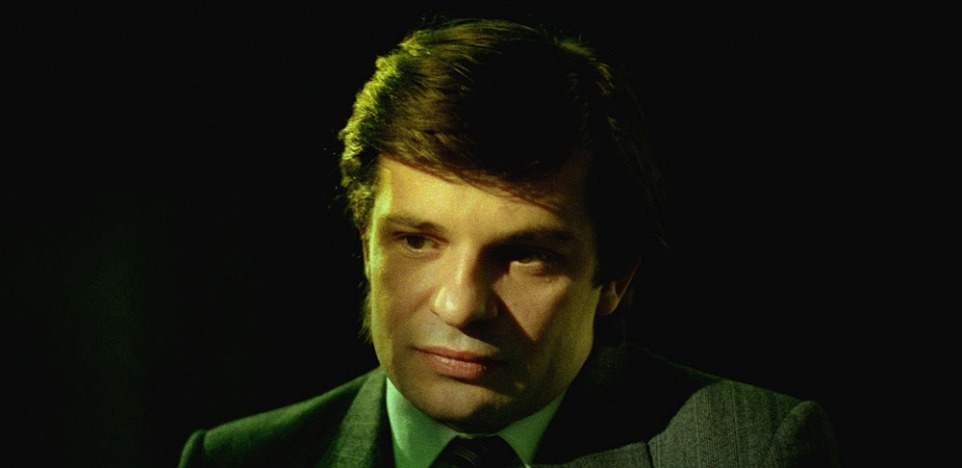Decalogue I & V: Kieślowski's Imperative
The visual medium of Decalogue V retells the antiquated commandment by injecting its truth into a fully furnished, modern day storyline. The medium is relevant to the contemporary of the Digital Age, appealing in its artistic and aesthetic appeal, as well as in the dramatic genre in which the actors bring it to life.
The written command is made relevant in the feeling infused by the narrative. As an audience, we are compelled to follow the commandment after resonating with the horrors that lie in the wake of murder. Krzysztof Kieślowski excellently arouses this response by unabashedly showing the vivid and grotesque encounter. The sense of injustice is heightened by the fact that the murder led to another death, and the audience feels appalled because both were senseless, preventable. One can only imagine the brokenness which would have propelled the dark chain of events. Regret for the entire sequence of events is compounded the more we learn that about the killer.
The commandment, on its own, lacks a compelling reason for us to adopt it- other than a gut instinct that killing is wrong. This reasoning is inexplicable, imparted to us in our “conscience,” and therefore elusive. The film takes the imperative “Thou shalt not kill” and gives us an emotional rationale for obeying it. We sense the destructive impact that the violation of the commandment has on specific people, with names and faces, as shown in the film.
The film humanizes a cold-blooded killer, to the point where, mere minutes after watching him brutally murder an unsuspecting man, we sympathize with him. We see the trial through the eyes of his defense attorney, and we fail to view his execution as nothing but another senseless killing. We wonder, “what is the point in all of this? Where is the redemption? Is killing the one unforgivable sin, the one after which we, as a society, confirm that a man has crossed a line guaranteeing his irreversible conversion to evil?” How Kieślowski manages to do this is a stroke of mad genius. He was right when he said that feelings bring us together. At the conclusion of Decalogue I, we are united with the disillusioned attorney as he raises his fist to the sky, crying out “I abhor this!”
In Decalogue I, Kieślowski embarks on a mission to awaken our sensibilities to the significance of the first command: Thou shalt have no other gods before me.”
We are compelled to abandon our own constructions of reasoning in favor of some notion of blind faith, as illustrated by Pavel’s aunt. When she holds the young Pavel in a selfless hug, she works a symbol for the communion with God, who is explored not as a far off and irrational “alternative” to science. God is explained not as the first commandment might have us believe: demanding, insecure, authoritarian...the image of an aggressive and instigative father yelling down to his children is conjured… God, we are told, is love. We are shown that this love is best felt and understood by the most natural means of human behavior, a common embrace, a simple and unmistakable gesture. Pavel's father is the one who Otto describes as one whose "rationalistic speculation" tended to conceal the true nature of God (The Idea of the Holy, 193). Pavel's father needed a system through which to maintain some determinable understanding of the world, some grasp on truth, something that makes the chaos manageable and the unpredictable predictable. The same reason he rejected the idea of God is the same reason why he could not come to terms with his son's death. His formulaic faith had failed him, leading him to seek out that which he previously had denied in the Sacred. As Otto writes, "we had to turn to the feelings of horror and shudder, to break through the hard crust of rationalism and bring into play the feelings buried deep down in our religious consciousness (193-4). Pavel's father embarks on this journey as he enters the chapel. In the final shot, as he consecrates himself with the holy water, we see some symbolic gesture that he has entered into some sacred communion with the Holy.
The wax symbolizing Virgin Mary moved to tears is a direct parallel to the tragedy of the Crucifixion of the Christ. The broken-hearted father mourning his son Pavel mourns in the company of the mother over the loss of her son Jesus. In this symbolic encounter, the Holy is also humanized as a caring and loving parent who is no stranger to grief. We get a sense that he is not alone, that the grief is shared by the sacred as well. This scene also confirms that ultimate meaning gives significance to the otherwise meaningless death of the young boy.
In these short clips of raw humanity, Krzysztof Kieślowski provokes the viewer into a something near an existential crisis. If beforehand we were complacent toward injustice, if we were indifferent toward the chaos of humanity constantly spiraling all around us, if we had somehow convinced ourselves that we could rely on ourselves or the world as we know it- we are irreversibly undone. We must find some way to cope with the reality of evil. The films convey a sense that we cannot but for the assurance that ultimate meaning will avenge the present and pervasive injustice of the temporal present.

Comments
Post a Comment